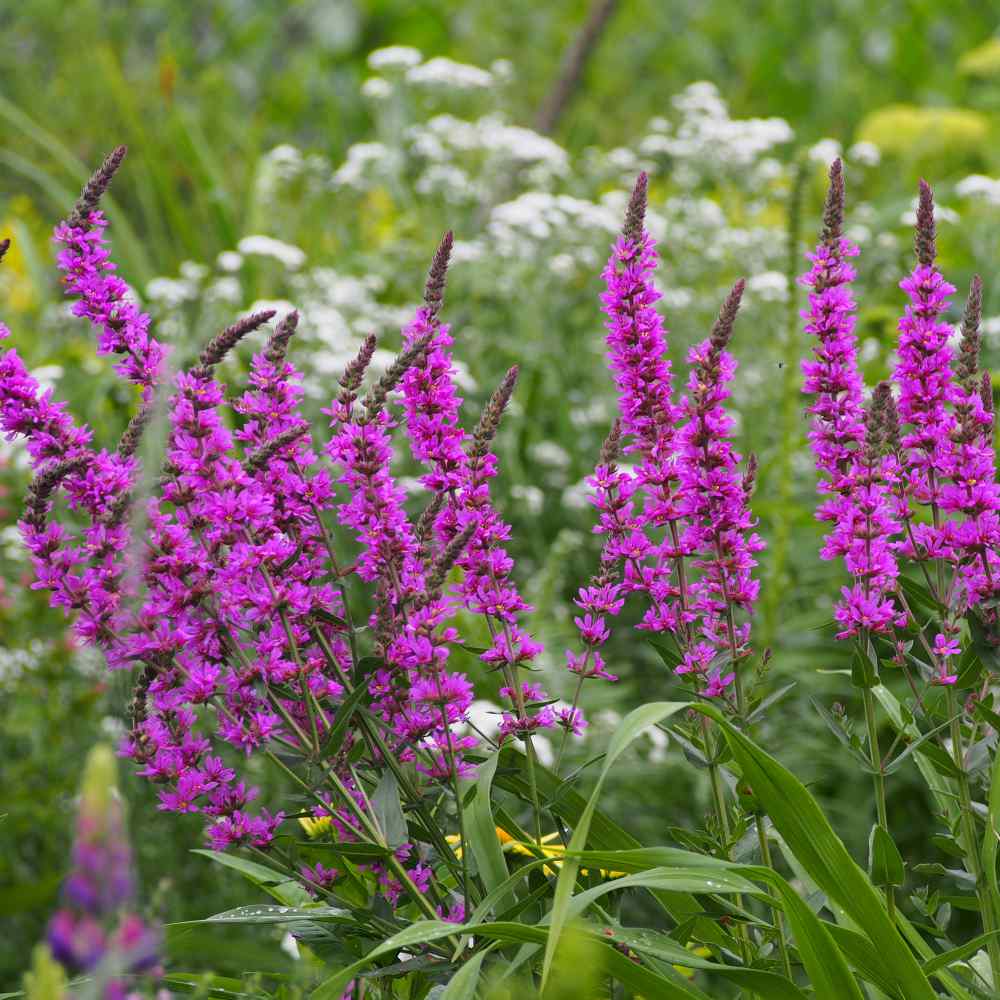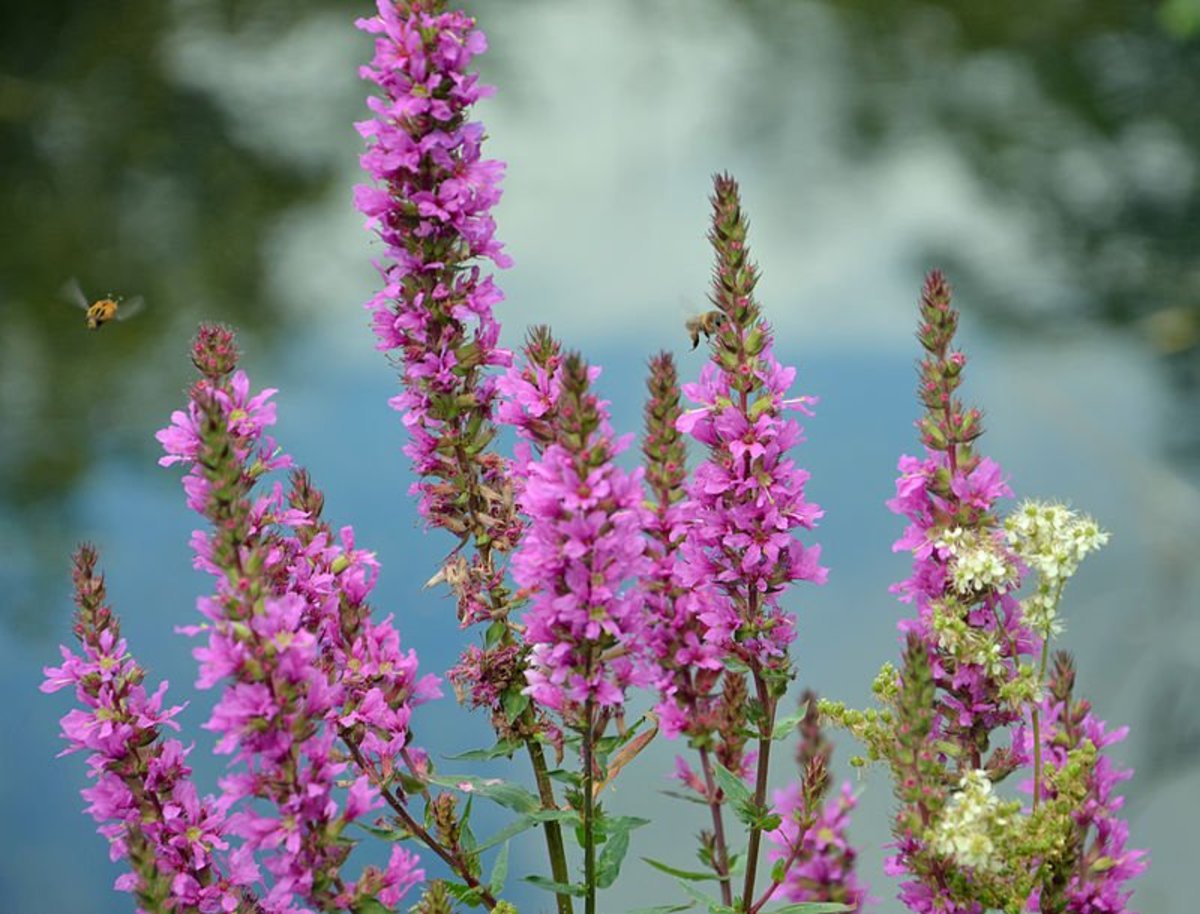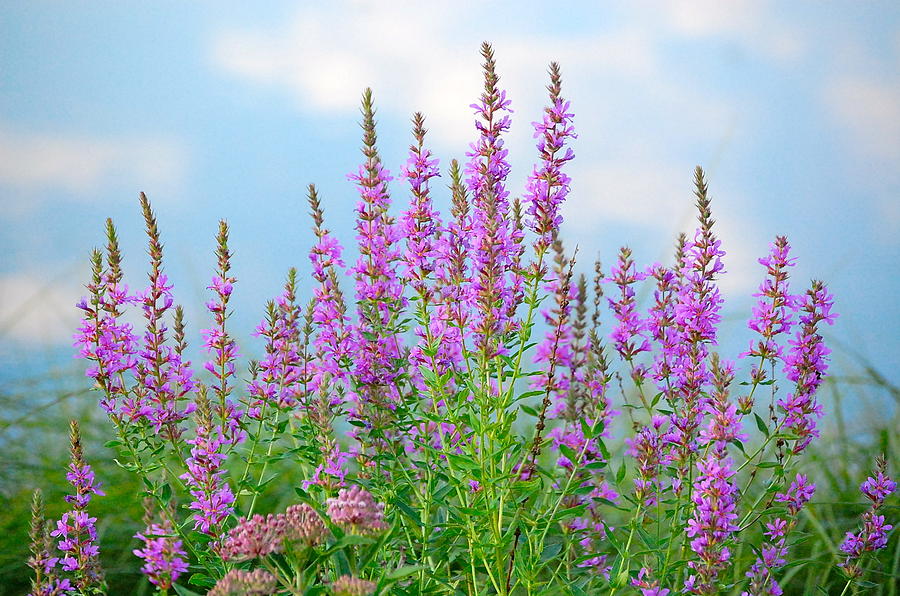
#Purple loose strife how to#

Similar species that may be mistaken for purple loosestrife include fireweed ( Epilobium agustifolium), blue vervain ( Verbena hastata, blazing stars ( Liatris spp.), native winged loosestrife ( Lythrum alatum) and native swamp loosestrife ( Decodon verticillatus). Leaves are opposite or whorled and three to 10 centimetres long, with smooth edges.Individual flowers have five to seven pink-purple petals about 10 millimetres long, arranged on long flower spikes at the top of stems.

Stems are woody and square, and each one can form a plant up to 2.4 metres high and 1.5 metres wide. One horizontal underground stem, known as a rhizome, can produce 30 to 50 erect stems.Photo: Rob Routledge, Sault College, Center for Invasive Species & Ecosystem Health (University of Georgia) How to identify purple loosestrife Stems are woody and square with opposite or whorled leaves. Large stands of purple loosestrife can clog irrigation canals, degrade farmland and reduce the forage value of pastures.By crowding out native plants it reduces biodiversity.The plant forms dense stands with thick mats of roots that can spread over large areas, degrading habitat for many native birds, insects and other species.Photo: David Voegtlin Impacts of purple loosestrife Fish and Wildlife Service European leaf-eating beetle, a natural enemy of purple loosestrife. Lawrence River Basin, and to scattered locations in the north around cities and towns such as Timmins, Geraldton, Sioux Lookout and Rainy River.įlowers have five to seven pink-purple petals arranged along long flower spikes. In Ontario, the plant has spread widely throughout the Great Lakes-St. From there, it spread westward across the continent to all Canadian provinces and all American states except Florida, Alaska and Hawaii. Purple loosestrife was first introduced to the Atlantic coast of North America. The beetles were widely released in Ontario, and purple loosestrife populations at many of these sites have been significantly reduced. This biological control of purple loosestrife can reduce populations by up to 90 per cent and allow native plants to re-establish. The beetles are natural enemies of purple loosestrife and feed primarily on the plant, although they occasionally eat other species of loosestrife.


In 1992, the Canadian and American governments approved the release of two European leaf-eating beetles, Galerucella calmariensis and G. The tiny seeds are easily spread by water, wind, wildlife and humans. Each plant can grow as many as 30 flowering stems that can produce up to 2.7 million seeds each year. The stands reduce nutrients and space for native plants and degrade habitat for wildlife. The plant forms dense stands with thick mats of roots that can extend over vast areas. Since it was brought to North America, purple loosestrife has become a serious invader of wetlands, roadsides and disturbed areas. The plant was also spread by European settlers and is still used in flower gardens and occasionally sold in nurseries today. This highly invasive plant was likely introduced when its seeds were included in soil used as ballast in European sailing ships and discarded in North America. Purple loosestrife is a wetland plant native to Europe and Asia that was brought to North America in the early 19 th century.


 0 kommentar(er)
0 kommentar(er)
